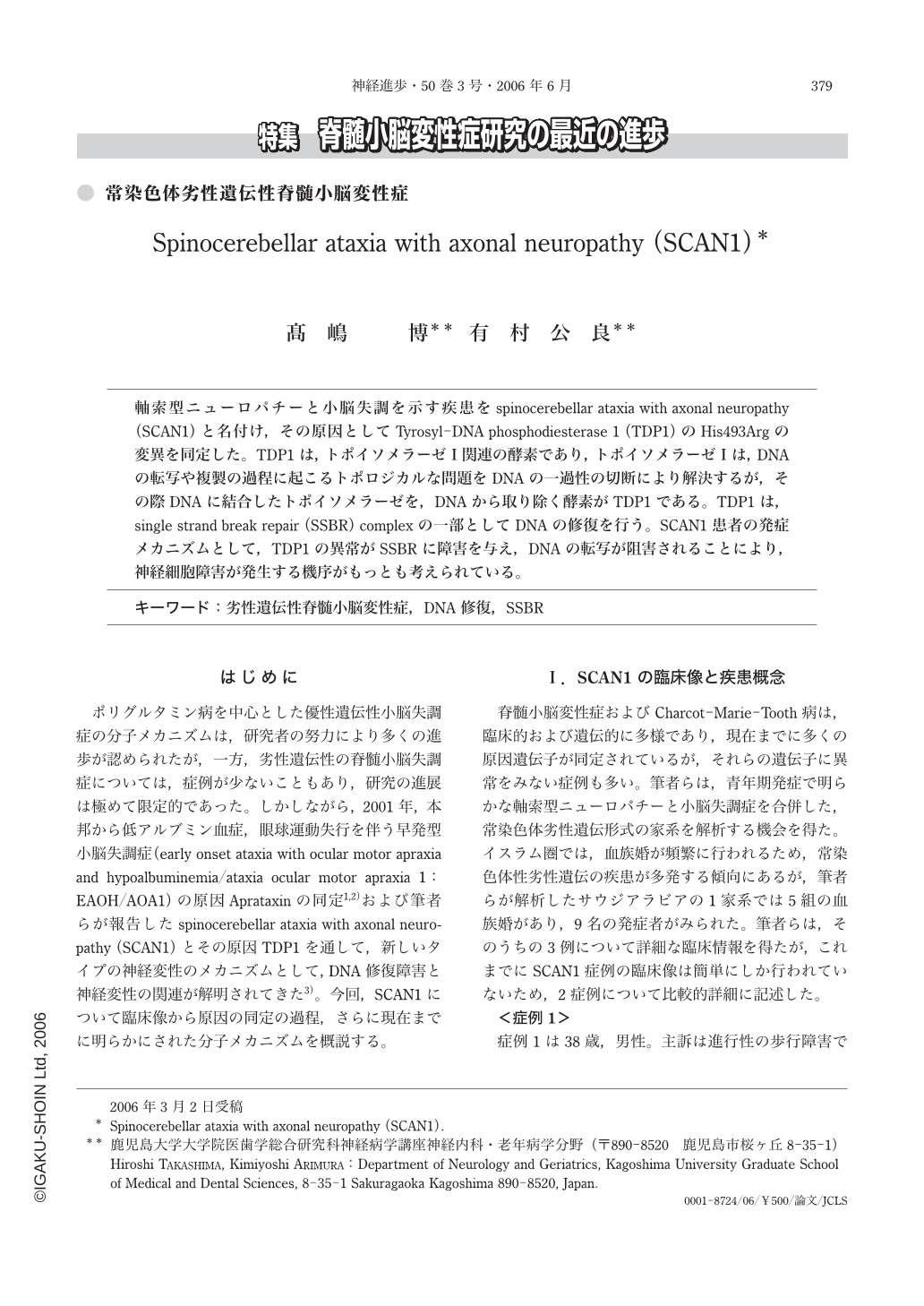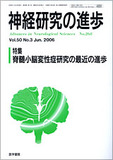Japanese
English
- 有料閲覧
- Abstract 文献概要
- 1ページ目 Look Inside
- 参考文献 Reference
軸索型ニューロパチーと小脳失調を示す疾患をspinocerebellar ataxia with axonal neuropathy(SCAN1)と名付け,その原因としてTyrosyl-DNA phosphodiesterase 1(TDP1)のHis493Argの変異を同定した。TDP1は,トポイソメラーゼⅠ関連の酵素であり,トポイソメラーゼⅠは,DNAの転写や複製の過程に起こるトポロジカルな問題をDNAの一過性の切断により解決するが,その際DNAに結合したトポイソメラーゼを,DNAから取り除く酵素がTDP1である。TDP1は,single strand break repair(SSBR)complexの一部としてDNAの修復を行う。SCAN1患者の発症メカニズムとして,TDP1の異常がSSBRに障害を与え,DNAの転写が阻害されることにより,神経細胞障害が発生する機序がもっとも考えられている。
Hereditary ataxia with neuropathy is clinically and genetically heterogeneous. To identify one of the causes of hereditary ataxia, we investigated a Saudi Arabian family with ataxia and peripheral neuropathy and named this disease spinocerebellar ataxia with axonal neuropathy(SCAN1). Using the positional cloning method, we previously identified a mutation of Tyrosyl-DNA phosphodiesterase 1(TDP1)as a cause of SCAN1. TDP1 hydrolyzes 3'-phosphotyrosyl bonds to repair covalently bound topoisomerase I-DNA complexes. All patients with SCAN1 had a homozygous His493Arg mutation. Because His 493 is located in the active site of the enzyme, we thought that loss-of-function of TDP1 induces the disease. However, a recent report revealed that His493Arg causes a special functional mutation which causes the accumulation of intermediates in the TDP1-DNA covalent reaction whose half-life is definitely longer than those of the wild type and other mutations. Since topoisomeraseⅠ always works during the transcription process, the presence of intermediates should affect the transcription process. Because abnormal transcriptions lead to neuronal degeneration in polyglutamine diseases, TDP1-DNA intermediates or loss-of-function TDP1 could lead to abnormal transcription in SCAN1 patients.

Copyright © 2006, Igaku-Shoin Ltd. All rights reserved.


